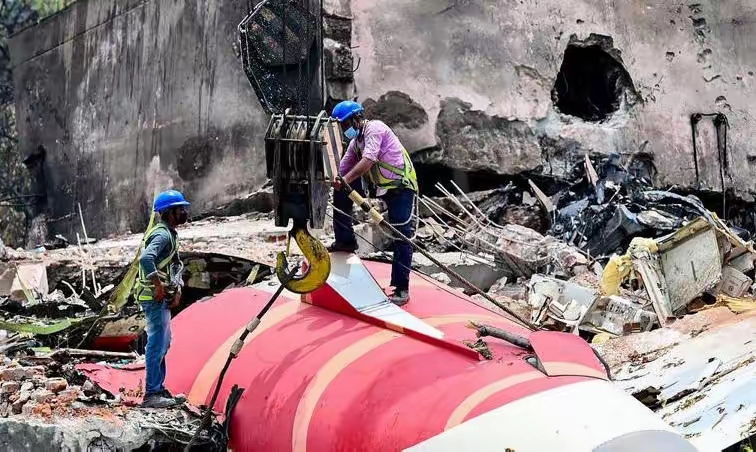
On the afternoon of June 12th local time, a Boeing 787-8 aircraft operated by Air India crashed shortly after takeoff from Ahmedabad Airport, resulting in the death of over 270 people on board and on the ground. This air crash shocked the world and also aroused people's high attention to aviation safety. As the investigation progresses, many issues gradually surface.
According to insiders, the current investigation focuses on pilot operation. Preliminary investigation results show that within seconds after takeoff, the switches controlling the fuel flow of the two engines were turned off, resulting in a significant loss of thrust shortly after takeoff. In the cockpit voice recording, one pilot can be heard asking another pilot 'why cut off', and the other pilot answers' I didn't do it '. This crucial dialogue greatly increases the possibility of pilot operational errors.
Normally, pilots use these switches to start, stop, or restart the engine in emergency situations, and the switches are usually kept open during the flight. But it is still unclear how and why the switch was turned off this time, whether it was accidental or intentional, and whether someone attempted to turn it back on. John Cox, a former airline pilot and current CEO of the consulting firm "Safety Operating Systems," analyzed that it may have been a mistake, such as when an engine malfunctioned and the pilot attempted to turn on the switch controlling that engine, but accidentally turned on the switch of another normal engine. However, the fuel switch design of the Boeing 787 has a special protection mechanism, and each engine fuel switch is equipped with a locking mechanism. When operating, the switch must be pulled out first to move the position, and the possibility of accidental contact is extremely low. From this perspective, if the final investigation results point to pilot operational errors, whether intentional or unintentional, it exposes serious deficiencies in the pilot's operational norms, emergency response capabilities, and cockpit crew collaboration and communication.
Although the current investigation tends to focus on pilot operation problems, the maintenance and technical hazards of the aircraft itself cannot be ignored. The report from the Indian Air Accidents Investigation Agency mentioned that the Federal Aviation Administration (FAA) of the United States had issued a notice related to the "Boeing 737" in 2018, stating that there was a "possible disengagement" hazard with its fuel switch locking function, and that various Boeing models, including some Boeing 787s, had switch locking mechanisms similar to those on the 737. Due to the fact that the FAA's recommendation at the time was not a mandatory safety directive, Indian Airlines did not conduct any relevant inspections on its fleet, including the crashed aircraft.
In addition, the throttle control module of the crashed aircraft has been replaced twice for reasons unrelated to the fuel control switch. Although the report did not indicate a direct correlation between these replacements and the accident, frequent component replacements may suggest management loopholes in the aircraft's daily maintenance and insufficient control over the overall technical status of the aircraft. Aircraft are complex high-tech products, and any abnormality in a component can trigger a chain reaction. However, airlines' failure to conduct comprehensive inspections and maintenance of aircraft in a timely manner according to relevant safety tips undoubtedly poses a hidden danger to flight safety.
In this air crash, the emergency response and rescue after the plane crash also exposed many problems. After the plane crashed, it caught fire, causing a large number of casualties, and the local rescue forces seemed unprepared to deal with such a major accident. From the perspective of rescue speed, the failure to effectively control the fire and launch large-scale rescue operations in the first time resulted in the loss of some lives of people who could have been rescued.
At the same time, the shortcomings of rescue equipment and technology have also been highlighted. Faced with the complex on-site environment after the plane crash, rescue personnel lack efficient dismantling and search equipment, which affects rescue efficiency. In addition, there is also confusion in the information release and coordination mechanism after the accident occurred. There is a lack of effective communication and collaboration among rescue forces, and information transmission is not timely or accurate, resulting in the inability to form a joint force in rescue operations and delaying the best rescue opportunity.
The Indian Airlines crash was a tragic event that exposed various issues such as pilot operation, aircraft maintenance, emergency response, and safety supervision. It not only sounded the alarm for the Indian aviation industry, but also provided profound lessons for global aviation safety. I hope that through this incident, all parties can attach importance to aviation safety, comprehensively investigate hidden dangers, improve regulatory systems, enhance emergency response capabilities, and avoid similar tragedies from happening again.

On January 4th local time, Trump warned India that if it does not limit its purchase of Russian oil, the United States will continue to raise tariffs on Indian products. Trump's latest warning sent shockwaves through the Indian financial market in just one day.
On January 4th local time, Trump warned India that if it do…
In October 2025, the US trade deficit narrowed unexpectedly…
According to the British media CoinJournal, recently, due t…
In January 2026, US President Trump once again set his sigh…
Europe is facing a crucial strategic choice: In the face of…
On New Year's Day 2026, BMW China announced a "systematic v…